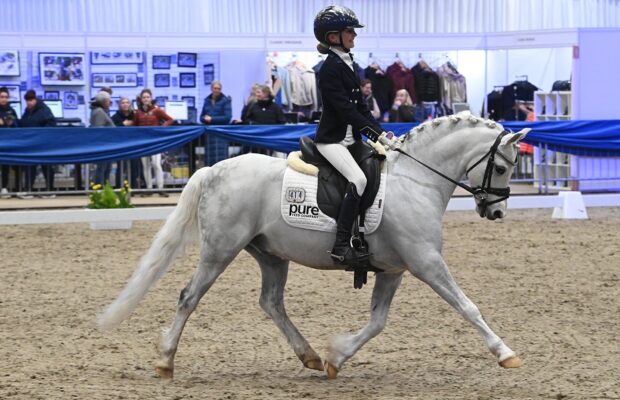Thinking of using spurs during dressage training or competition? Here’s what you need to know when choosing the best ones for you
While the use of spurs is an issue which continues to attract negative press in some quarters, applied correctly they remain a useful piece of equipment for creating and refining a response in dressage training. International dressage rider Hannah Biggs says she considers spurs “an extension of the rider’s physical vocabulary”.
“They help to maintain a calm conversation with the horse, so you’re not always ‘shouting’ with kicking legs. If the horse needs a little extra, refined aid, the spur is there to remind the horse to listen but, once used, I always return to a quiet leg and the spur away from the horse.
“My aim is to train the horse so that I don’t have to always use the spur. It’s more there for ,” says Hannah.
She is clear, however, that riders must first develop an independent seat and the ability to avoid touching the horse’s sides with every stride before using spurs.
“Often, riders who have developed a habit of kicking with every stride have desensitised the horse to the leg aid. This bad habit needs correcting before spurs are used; nor should spurs be seen as a solution to a horse that has become ‘lazy’ moving forward because of this habit,” she says.
‘Used wrongly, spurs are very detrimental to a horse’s training’
Dressage rider Laura Milner, who represented Team GB for the first time as a Young Rider at CDI Le Mans 2015, agrees an independent seat is fundamental.
“If you’re still using your legs to grip, you’re not ready to use spurs as you will be holding them against the horse constantly. Used wrongly, spurs are very detrimental to a horse’s training,” warns Laura.
“I use spurs on most of my horses, but for differing reasons; for example, with some I get a better reaction than when using a whip. When a horse is moving up the levels, using a spur adds refinement to the leg aid.”
Start with a small, dull spur
As with many pieces of equipment, there is a dizzying array of spurs according to the length and shape of the shank, the shape of the tip and the addition of rowels or rollers at the point of contact. As a rule of thumb, start with a small, dull spur (rounded end) and gauge the level of reaction from the horse.
“I must admit I have quite a collection but most have a fairly short shank, as well as rounded tips and smooth rowels. I personally don’t use the ones with the plastic roller balls but they can be useful for a rider still learning full leg control as they are more forgiving of inadvertent contact,” says Hannah, who says her choice of spur depends on the horse and what she wants to achieve during the session.
The rules
Under British Dressage rules, spurs may be worn at all levels (mandatory from advanced level upwards, although dummy spurs are permitted) and excessive use of spurs is forbidden. They must be made of metal, although can have a smooth rotating rubber, metal or plastic ball on the shank, and the band round the heel must be smooth; ‘comb’ spurs are not permitted.
The rule book also states the shank on the back of the heel “must point towards the rear and the end must be clearly horizontal to the ground or pointing downwards […] There is no restriction on the type of shank and rowels that are permitted provided that they are free to rotate and must be vertical to the ground. Rowels with points must have rounded ends.”
“It’s important to remember that the wrong type of spur incorrectly applied can make a horse very reactive. I would never use spurs with sharp edges, for example, for fear of marking the horse or causing discomfort,” says Laura.
Like this? You might also enjoy reading these:
Isobel Wessels: 9 tips for dressage success
3 top tips
1. Before using spurs, make sure you have independent seat, hands and legs, so you are able to apply one aid without negatively impacting the other(s). Ask your trainer for advice if unsure.
2. Use the smallest spur required to achieve the response you want; remember, sharp or pointed spurs should only ever be used by advanced riders in specific situations.
3. Introduce young or reactive horses to spurs very carefully.




